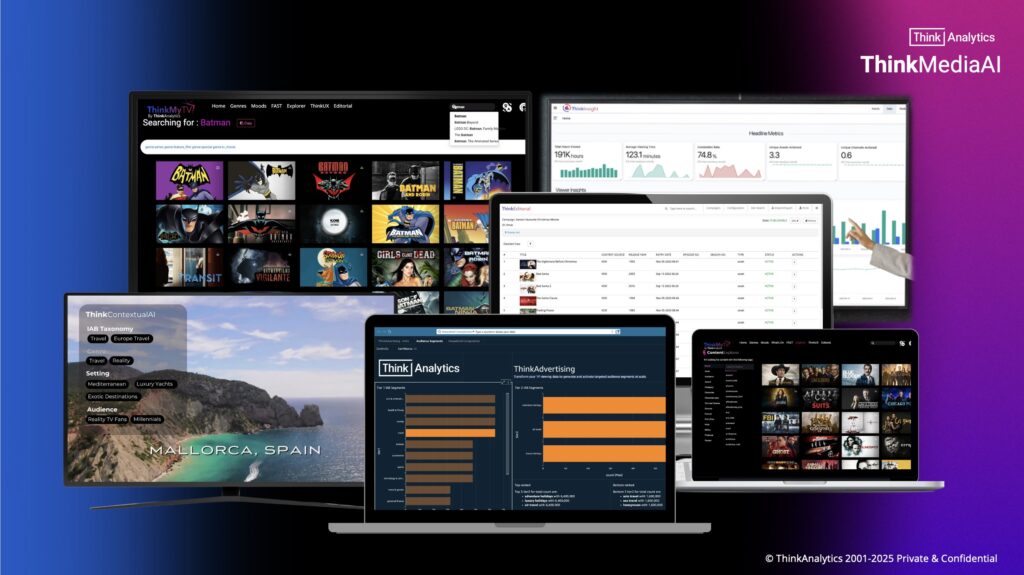In the fast-evolving landscape of video content delivery, small and medium-sized businesses (SMBs) face increasing challenges in maximizing viewer engagement and optimizing operational efficiencies. The introduction of ThinkAnalytics’ ThinkMetadataAI marks a significant development in automating the tagging and management of metadata for content catalogs. By leveraging agentic AI technology, this tool aims to streamline an often cumbersome process and enhance how content providers interact with their audiences.
Implementing automation through AI tools can provide a pathway for SMB leaders to modernize their operations and improve their service delivery. Begin by identifying specific tasks that could benefit from automation. In the context of video content, this could involve metadata generation, which is crucial for effective search, discovery, and audience engagement. The introduction of ThinkMetadataAI serves as a case study for how similar automation can be approached.
To get started, SMBs can integrate automation tools such as Make or Zapier. These platforms allow organizations to create workflows that automate repetitive tasks without extensive coding knowledge. The first step is to map out your current workflow for handling content metadata. Identify every touchpoint where manual input occurs, such as tagging content with descriptions, genres, or viewer recommendations.
Once you have a clear understanding of your existing processes, explore the capabilities of automation tools. For example, using Zapier, you can create “Zaps” that trigger actions based on specific conditions. A simple automation example would be integrating a content library with a system that automatically applies tags based on predefined criteria. This not only saves time but also ensures a uniform approach to tagging, thus minimizing inconsistent metadata that can frustrate users.
With ThinkMetadataAI highlighting the benefits of automated metadata creation, one can reflect on the underlying principles of agentic AI—systems that take autonomous actions based on learned data and patterns. To adopt these principles in your operations, consider training your AI models on your existing content and usage data. This training can help the AI understand which attributes are most relevant for tagging, enabling its ability to enhance search and discovery mechanisms.
Another opportunity arises in the realm of language support. ThinkMetadataAI claims to handle multiple languages, which can be vital for SMBs operating in diverse markets. SMBs should assess their current content offerings and evaluate whether automated language tagging could improve their viewer outreach. Setting up automation for language translations and categorizations can expand reach without incurring additional costs related to manual translations.
While automation presents significant opportunities for efficiency gains, it’s also essential to be aware of potential risks. The reliance on automated systems raises concerns about data integrity and the quality of output. Therefore, a feedback mechanism should be established to review the metadata generated by the AI. Quality checks can be automated as well; for instance, alerts can be set up to notify your team if critical metadata aspects are missed or incorrectly tagged.
Calculating the return on investment (ROI) of implementing automation tools involves assessing cost savings from reduced manual labor and improved viewer engagement through better recommendations. Start by tracking current expenses related to content management and maintenance. After adopting automation, measure the decrease in workload and compare it against the costs associated with the tools and any necessary integrations. The gains in viewer satisfaction and retention can serve as additional parameters to determine overall ROI.
In practice, once your automation is established, focus on continuous improvement. Regularly analyze viewer engagement metrics and feedback to inform future iterations of your automated workflows. For instance, if you notice that viewers are more engaged with specific genres, tweak your tagging criteria accordingly to prioritize those genres in future content recommendations.
ThinkMetadataAI stands as a testament to harnessing the power of AI for practical business applications. As SMB leaders consider similar implementations, the expectation should be set on achieving operational efficiencies alongside a richer viewer experience. The integration of these advanced technologies will not only optimize workflows but also foster a culture of innovation within organizations.
In summary, the advent of solutions like ThinkMetadataAI presents SMBs with a unique opportunity to transform their content strategies through automation. By carefully mapping workflows, utilizing automation platforms like Make or Zapier, and continuously refining processes based on data insights, businesses can position themselves for success in an increasingly competitive environment.
FlowMind AI Insight: Embracing automation in content management is more than just a trend; it’s a strategic necessity. As SMBs adopt AI-driven solutions, they align operational efficiency with a richer understanding of their audience, ultimately driving growth and engagement.
Original article: Read here
2025-09-04 19:10:00

